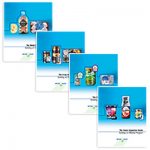FDA has released the 483 Inspectional Observation reports involving the Blue Bell facilities following the recent Listeria outbreaks in ice cream. While most of the information contained in a 483 is not a big surprise to a typical food safety expert, I was still struck by some of the observations. Below are extracted sections within the 483 language that raised some questions in my mind.
Point 1
“Failure to perform microbial testing where necessary to identify sanitation failures and possible food contamination… Plant Environmental Program was used as an indicator determining whether the cleaning and sanitation program was effective. However this sampli ng program failed to include the following:
- Sampling food contact surfaces.
- Determination of the Listeria spp. associated with the presumptive positive results.
- Root cause analysis of why the cleaning and sanitizing treatments were inadequate in controlling the occurrences of microbiological contamination.”
Q: Does this mean that FDA expects us to do zone 1 testing on a routine basis?
A: Based on this 483 – the answer is yes. But, if so, when should this be done? Is post clean up and pre-start up adequate? I sure hope so!
Q: Does this mean whenever we identify Listeria spp. we need to get it typed to determine the type of Listeria?
A: Based on this 483, the FDA will write you up if you simply stop at Listeria spp.
Q: Does this mean that every time we have a positive finding, we must document a root cause analysis?
A: Maybe…or is it only when we have multiple positives?
Point 2
“You also stated the results of your daily total coliform sampling on finished product, in process product, and raw ingredients added post pasteurization were used as an indicator in determining whether the cleaning and sanitation program was effective. However, this sampling program failed to include the following:
- Determination of the pathogenicity of the coliform isolates.
Q: Does this mean when we find coliforms in finished product, or in ingredients being added post lethality or with in-process product, we need to determine if any of the coliforms would be considered to be pathogens?
A: The answer would appear to be yes.
Point 3
“Failure to store cleaned and sanitized portable equipment in a location and a manner which protects food-contact surfaces from contamination.”
This observation was related to equipment that was being stored in a basement area uncovered and unprotected, and that same equipment would be re-cleaned and sanitized prior to use.
Q: If you are storing equipment that has a food-contact surface, should the food-contact surface area be fully covered and protected, even if you will clean and sanitize it prior to production?
A: Based on this observation, the answer is yes. When you store equipment you will later use and if it has a food contact surface, make sure you cover and protect that surface during storage.
Point 4
“All reasonable precautions are not taken to ensure that production procedures do not contribute contamination from any source. Specifically, you do not have cleaning and sanitizing procedures for employee shoes worn into the sanitary food production areas of the firm to ensure that any potential contamination risks are minimized.”
Q: Does this mean that, at all entries to a sanitary or RTE area, there needs to be a process for cleaning and sanitizing footwear?
A: While this is certainly a common industry practice, it appears to now be a requirement.
Point 5
“The design of equipment does not allow proper cleaning and maintenance. Specifically wooden pallets which are porous and not easily cleanable are used throughout your firm to store and transport raw ingredients, finished product, and packaging materials. The wood pallets were observed in different stages of damage and disrepair while they were being used in the kitchen, warehouse, freezer, production, and mixing areas. The top platform, bottom, and corners of the pallets were broken, discolored, and soiled. The wood pallets were also observed to be saturated from being used in the wet processing areas and were observed as having black mold-like residues and red stains.”
Q: Is FDA declaring war on wood pallets?
A: Certainly wood pallets are known to be a potential problem, but FDA is making it clear that you should not use wood pallets if they are damaged, discolored or soiled – even to store packaging materials or containers of food that will subsequently be used in production.
Conclusion
There are always opportunities to learn from others’ 483s, however, the above 483 extractions a little alarming. Not many companies will speciate Listeria spp., they will treat a Listeria finding as though it were LM and act accordingly. But based on these 483s, FDA could issue a 483 if you don’t speciate your Listeria spp. They could issue a 483 if you don’t test your coliforms in finished product or raw ingredients being used in finished product to see if any are pathogenic.
The language in the Blue Bell 483s is sending a strong prevention message to the food industry. It is also clearly using FSMA-like approaches. I see some of the observations in these 483s as being grenades that FDA has lobbed out – and it will be interesting to see if they have pulled out the pins as FSMA continues to roll out and FDA kicks up its inspections of food safety plans and preventive controls a notch. My message to the industry is this: Watch out and learn from others’ mistakes.







